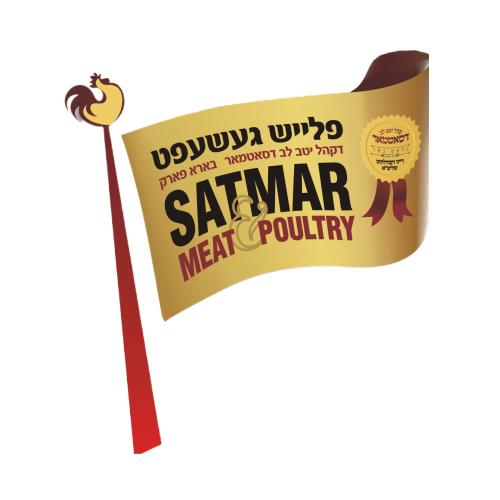
Rosh Keves: A Sacred Tradition for the Jewish New Year
Share
Rosh Keves: A Sacred Tradition for the Jewish New Year
The lamb head, known in Hebrew as "Rosh Keves," stands as one of the most meaningful symbolic foods served during Rosh Hashanah celebrations. This ancient tradition carries deep spiritual significance, representing the hope to "be a head and not a tail" in the coming year—a powerful blessing for leadership, success, and spiritual elevation.
Understanding the cultural and religious importance of this dish helps families connect with centuries of Jewish heritage while creating memorable Yom Tov experiences. Whether you're continuing a family tradition or exploring this meaningful custom for the first time, the preparation and presentation of Rosh Keves deserves careful attention and respect.
The Sacred Symbolism Behind Rosh Keves
The term "Rosh Keves" translates directly to "head of lamb" or "ram's head" in Hebrew. During Rosh Hashanah, Jewish families incorporate this dish into their festive meals as part of the traditional symbolic foods that represent hopes and prayers for the new year.
The symbolism runs deeper than its literal translation. By placing the lamb head on the Yom Tov table, families express their desire for divine guidance and the wisdom to lead rather than follow. This practice connects modern celebrations to ancient Temple traditions, where the ram's horn (shofar) calls the community to spiritual awakening.
Many families also see the ram's head as a reminder of the Binding of Isaac, when Abraham found a ram caught in the thicket as a substitute offering. This connection adds layers of meaning about faith, providence, and divine intervention to the Yom Tov meal.
Traditional Preparation Methods
Preparing Rosh Keves requires both culinary skill and religious observance. The lamb head must come from a kosher source and undergo proper rabbinical supervision to ensure it meets all dietary laws.
Traditional preparation often involves slow roasting with aromatic spices like rosemary, thyme, and garlic. Some families prefer braising methods that tenderize the meat while preserving its ceremonial appearance. The cooking process typically takes several hours, allowing the natural flavors to develop fully.
Before cooking, many families perform a thorough inspection to ensure the meat meets the highest kosher standards. This careful attention to detail reflects the sacred nature of the dish and its central role in observance.
Modern Observance and Accessibility
Contemporary Jewish families have found various ways to honor this tradition while adapting to modern kitchens and dietary preferences. Some families choose to display the lamb head ceremonially before preparing it in more familiar cooking methods.
Professional kosher butchers now offer pre-prepared options that maintain traditional standards while providing convenience for busy families. These preparations undergo rigorous inspection and come ready for home cooking, making the tradition more accessible to families who may lack experience with this specialized preparation.
The availability of quality Rosh Keves from trusted kosher sources has helped preserve this meaningful tradition across generations and geographic locations.
Serving and Presentation
The presentation of Rosh Keves carries as much importance as its preparation. Traditionally, the dish occupies a place of honor on the Rosh Hashanah table, often positioned near the head of the household to emphasize the blessing for leadership.
Many families accompany the lamb head with other symbolic foods like apples and honey, pomegranates, and round challah bread. This creates a complete tableau of traditional Rosh Hashanah symbols that engage all the senses and create lasting memories for children and adults alike.
The blessing recited over the Rosh Keves specifically mentions the desire to be "a head and not a tail," connecting the physical act of eating with spiritual intention and prayer.
Why This Tradition Endures
The enduring appeal of Rosh Keves lies in its ability to connect families with their ancestral heritage while creating meaningful experiences for new generations. The dish serves as both a culinary centerpiece and a conversation starter, prompting discussions about faith, tradition, and family history.
For many families, preparing and serving Rosh Keves becomes an annual ritual that strengthens family bonds and cultural identity. The careful preparation required encourages mindfulness and intentionality in Jewish observance.
The tradition also offers an opportunity to teach children about Jewish values, symbolism, and the importance of maintaining cultural practices across generations.
Order Rosh Keves Now
Ready to honor this beautiful tradition at your Rosh Hashanah table? Our expertly prepared lamb head undergoes thorough rabbinical supervision and arrives ready for your Yom Tov meal. Each Rosh Keves is carefully inspected to meet the highest kosher standards, ensuring your family can celebrate with confidence and reverence.
Order your Rosh Keves today and bring this meaningful tradition to your Yom Tov table, creating memories that will last for generations to come.


